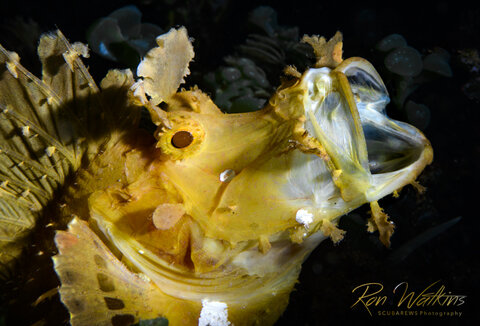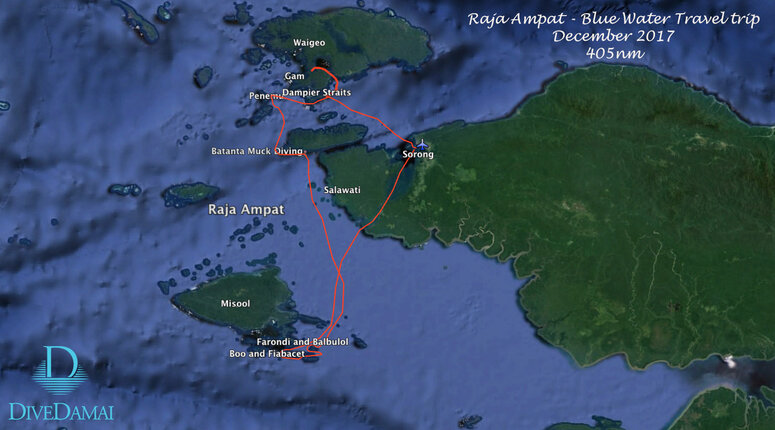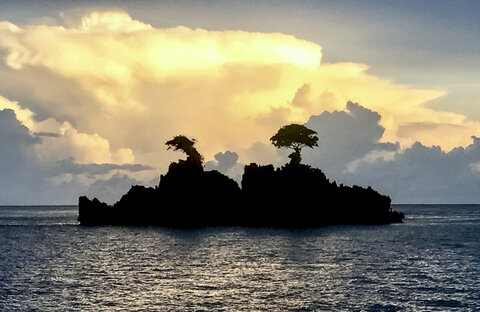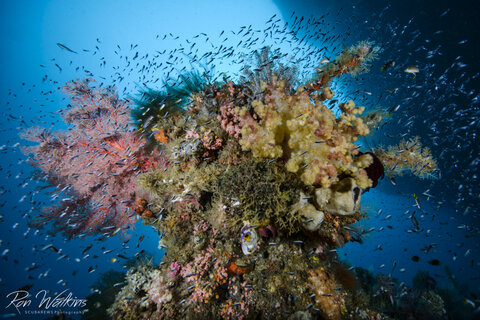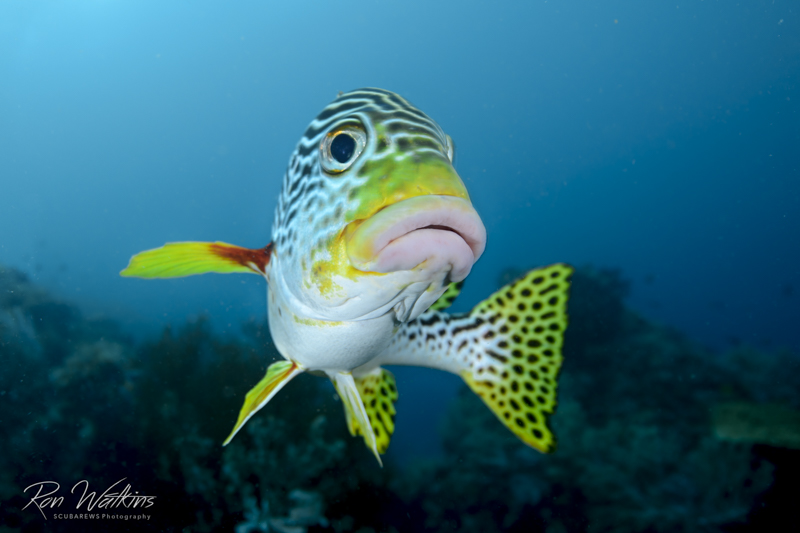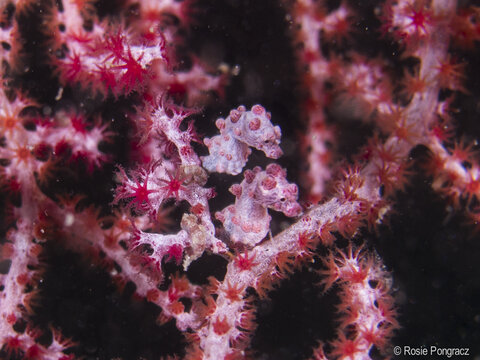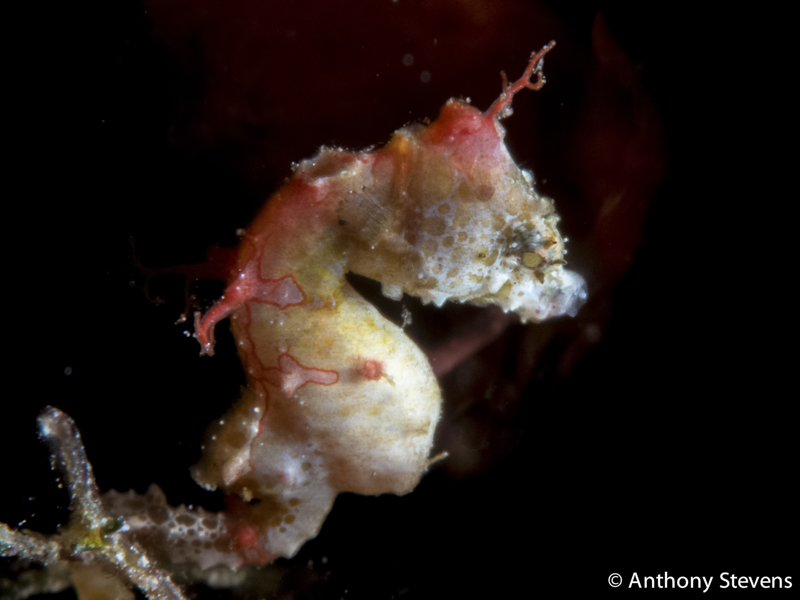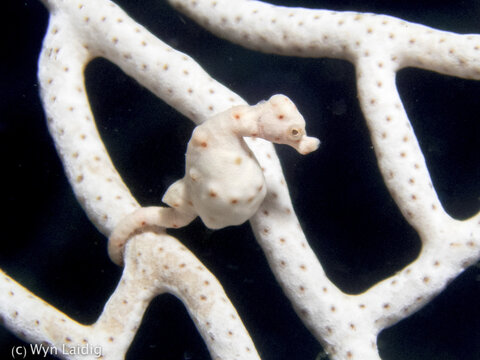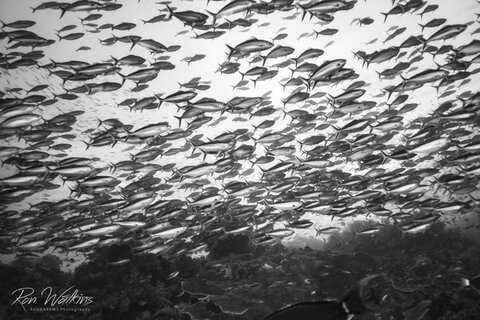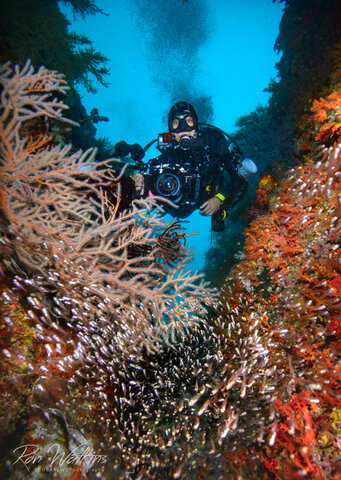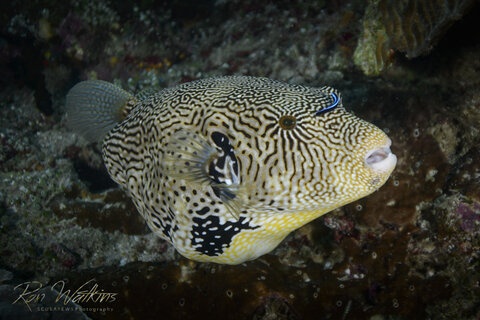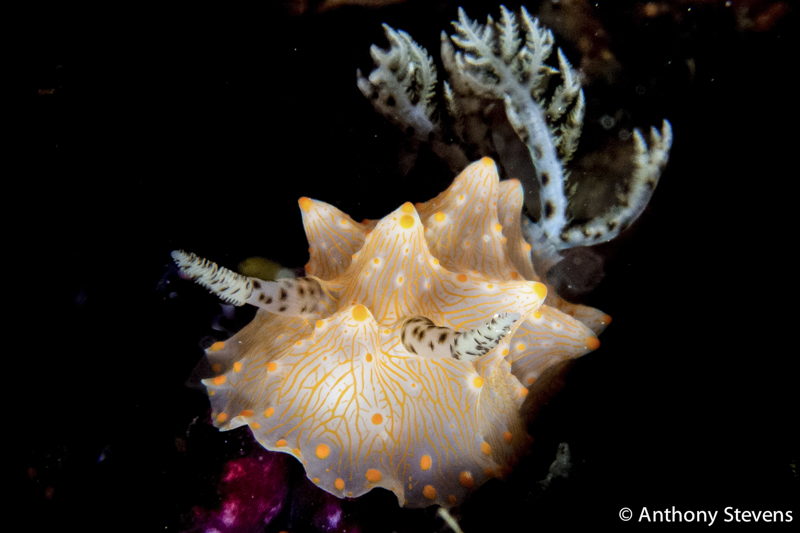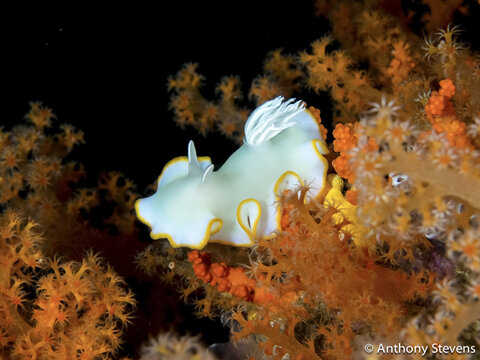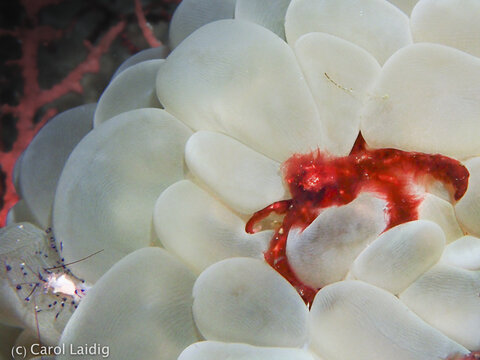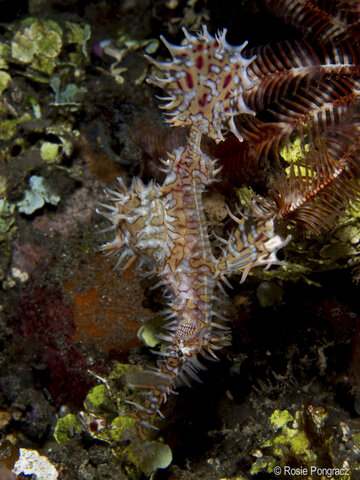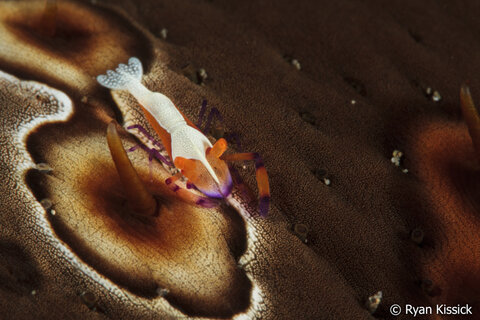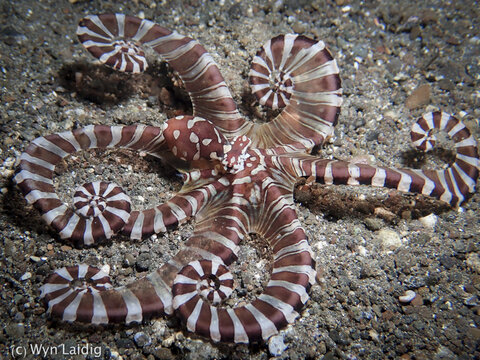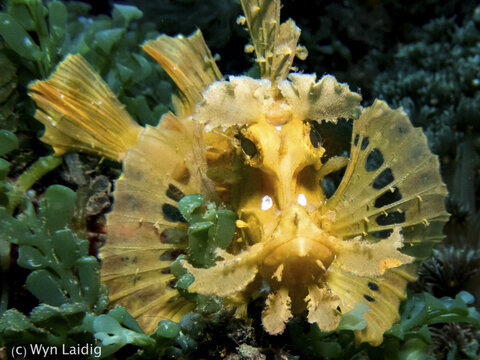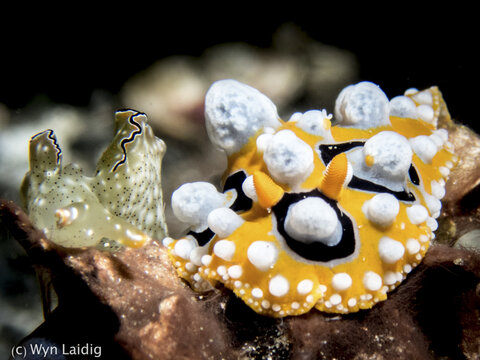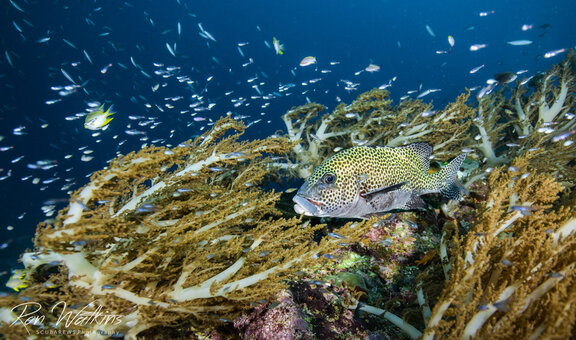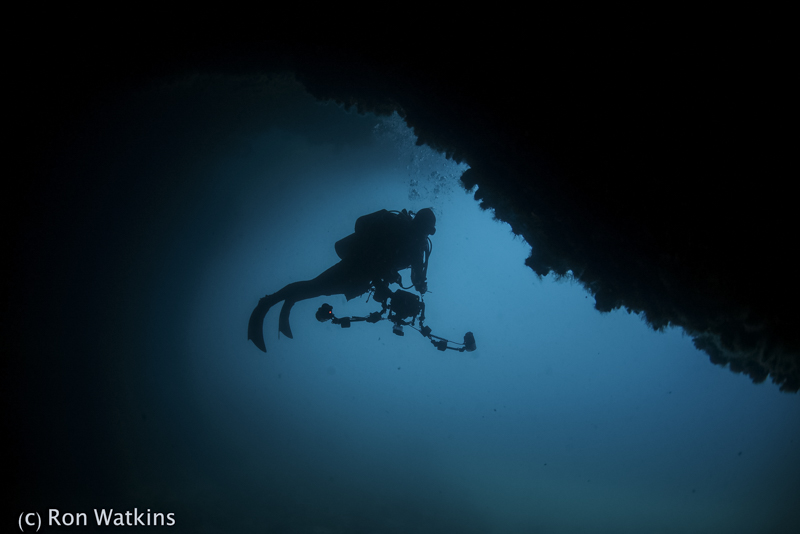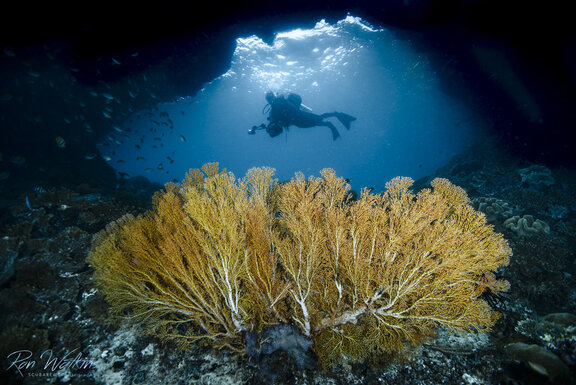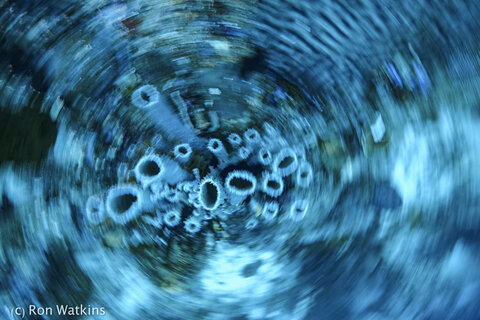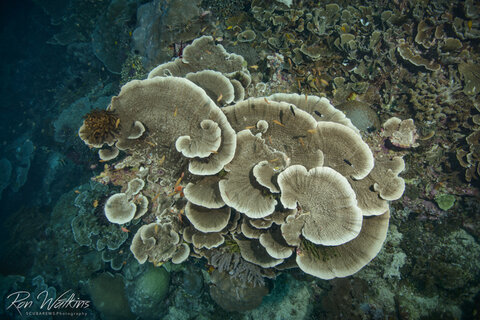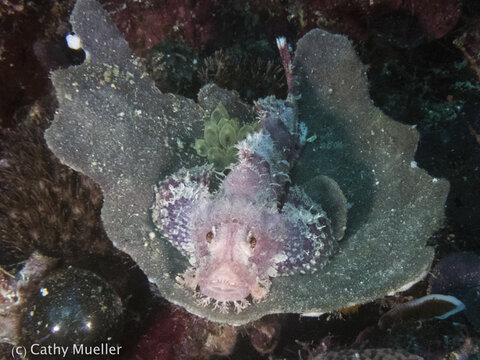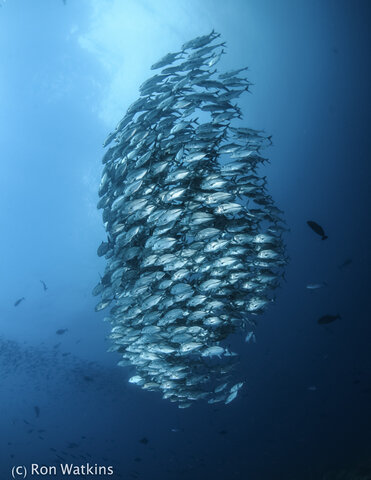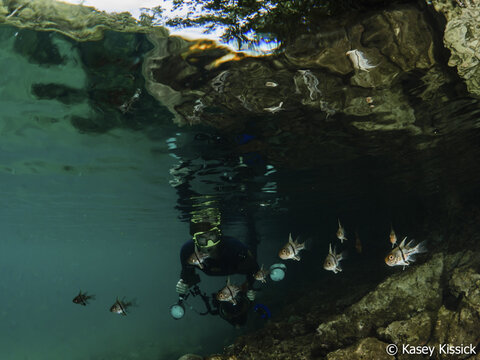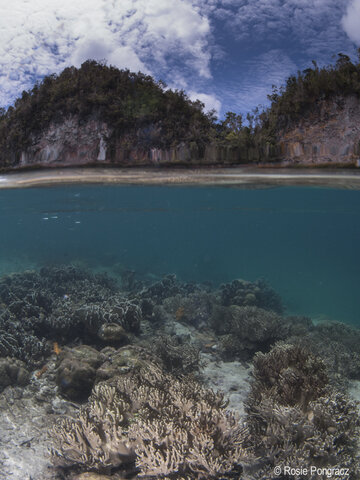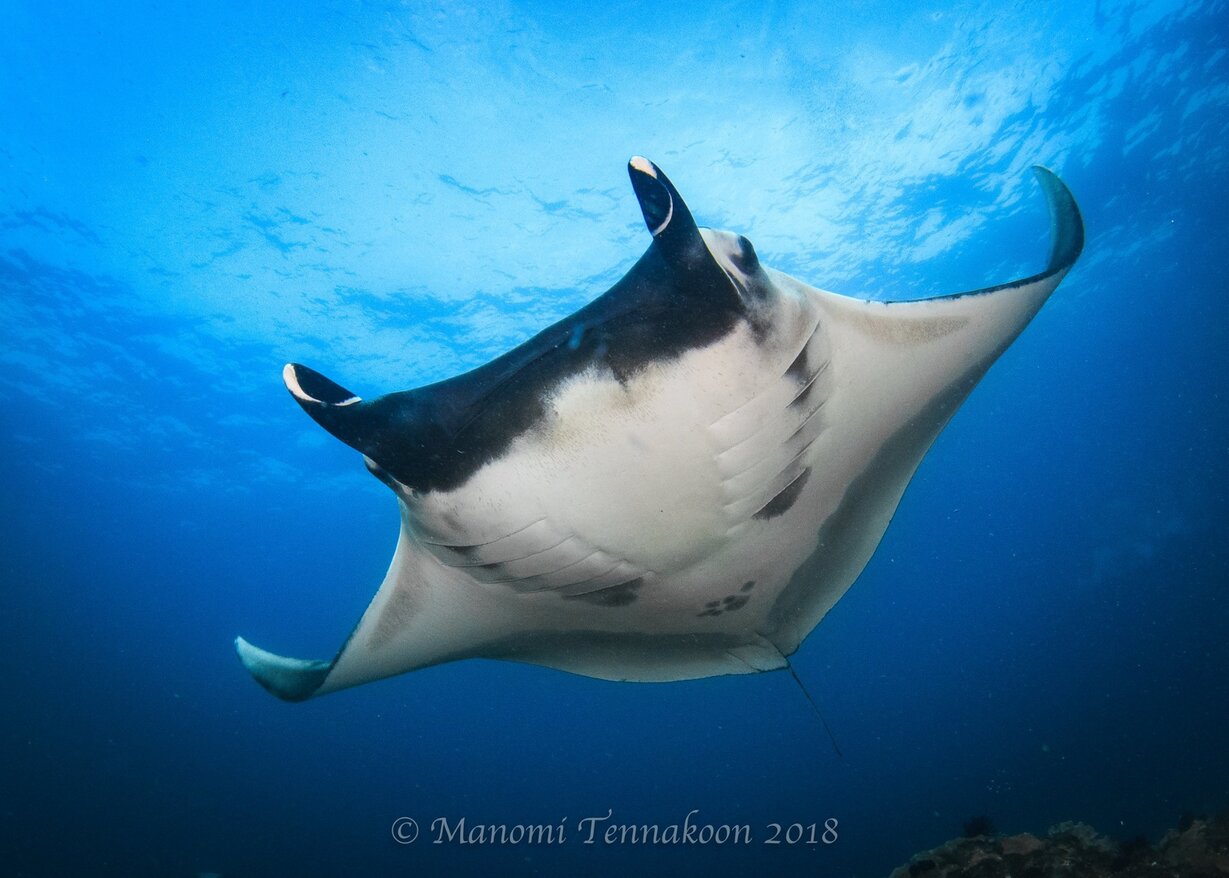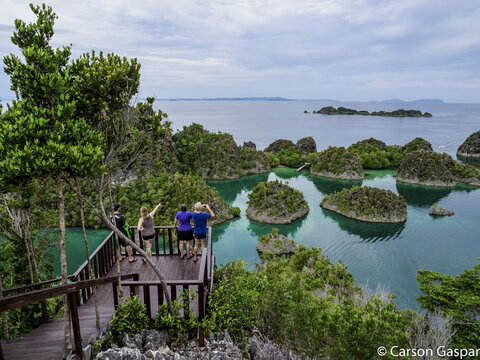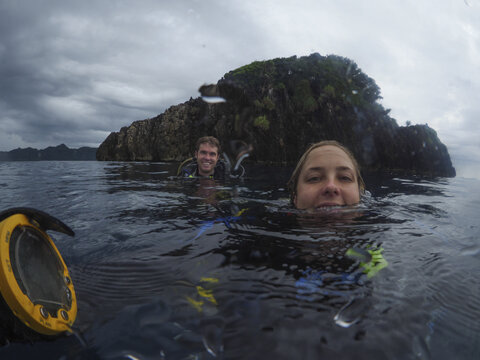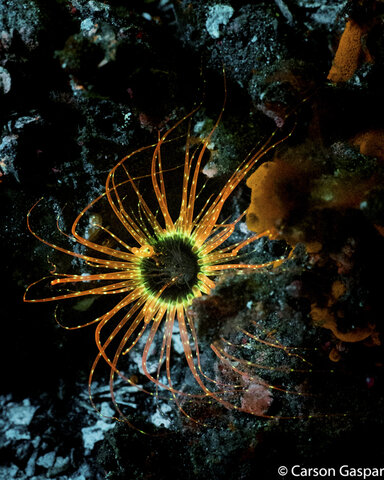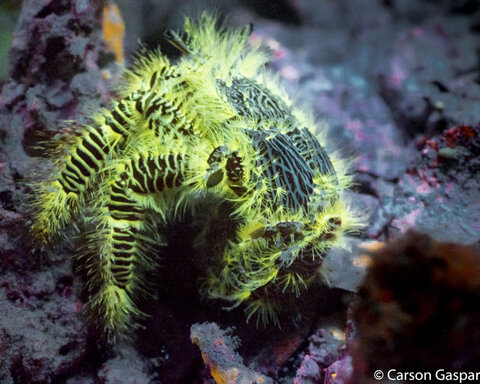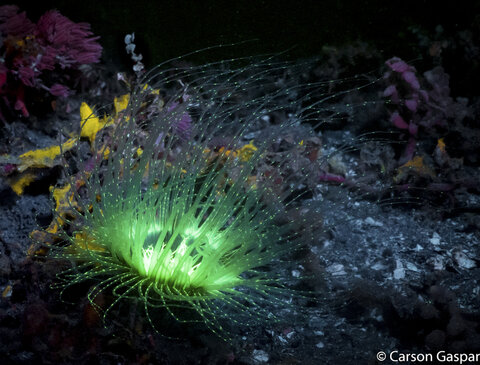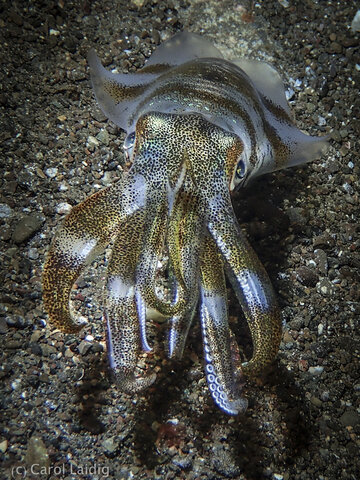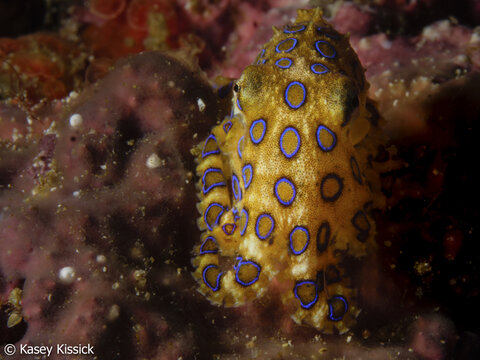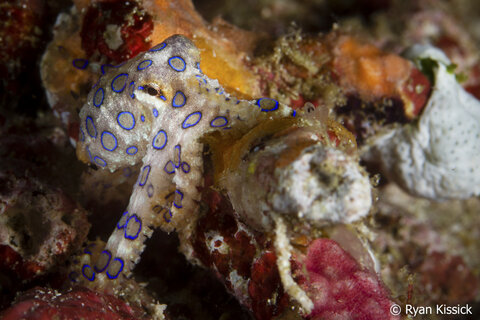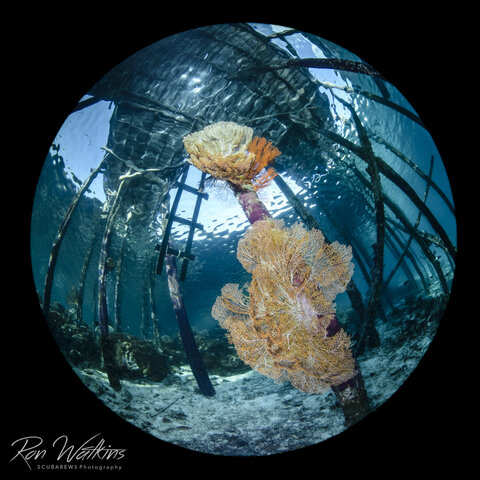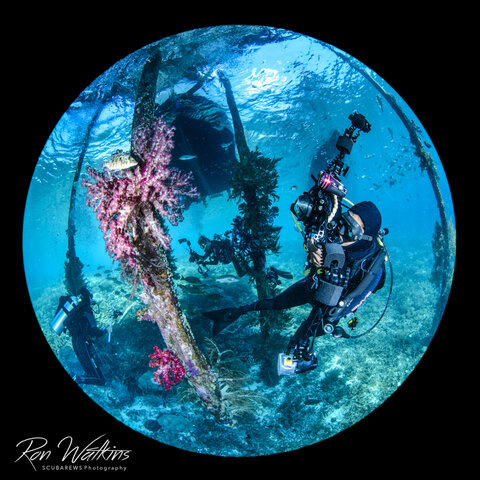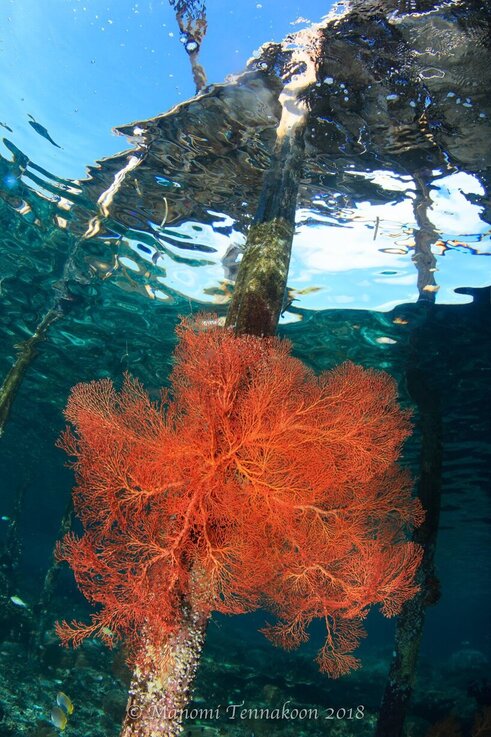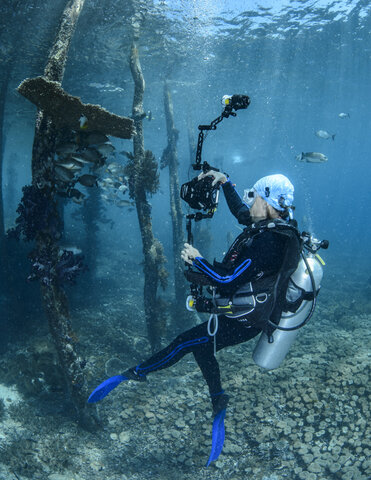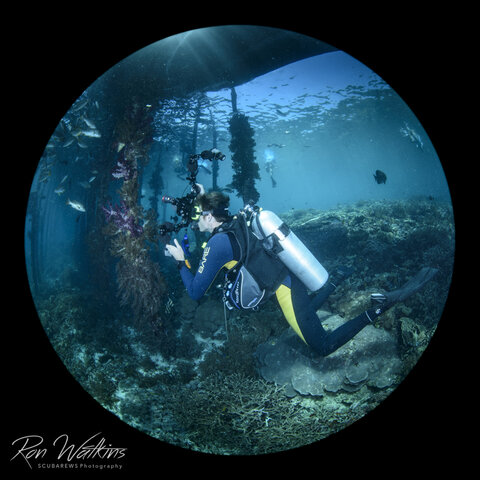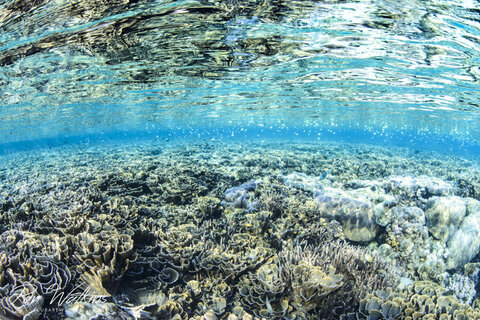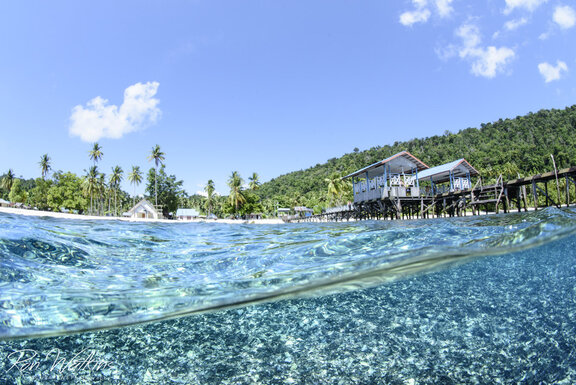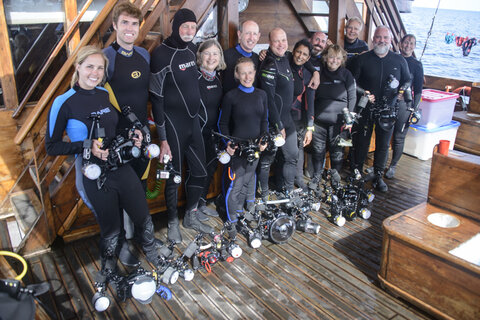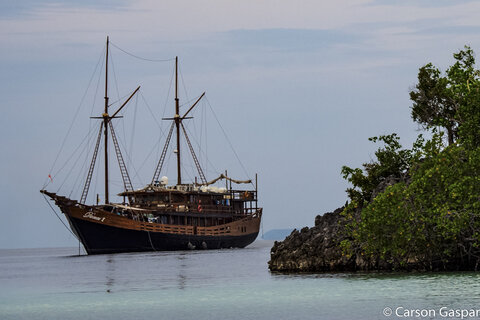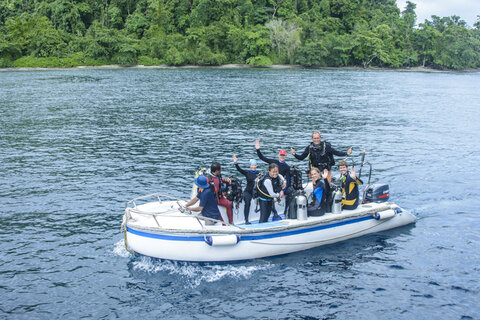BLUEWATER PHOTO WORKSHOP
RETURN TO RAJA AMPAT ABOARD DAMAI II
DECEMBER 5 - 15, 2017
BY TRIP LEADER RON WATKINS
My first trip to Raja Ampat was in 2009 when I spent four fantastic dream weeks diving from Kri Eco Lodge and aboard the SMY Ondina live-aboard. Back then, the islands of the “Four Kings” off the northwest tip of Bird’s Head Peninsula in West Papua, Indonesia were considered a remote and rarely dove part of the world with the most biodiversity and healthy eco systems in the world. There were only a hand full of boats and resorts offering trips back then and the long two-day journey to get there from the US kept many away. But as breath taking images and stories of an underwater paradise for diving got out, the demand to dive Raja Ampat increased and today there are more than 50 live-aboard ships and numerous land based operations to chose from as well as increase flights into the city of Sorong where most dive trips originate from. Seven years later as I prepared for this trip, I wondered would it be as special of a place as it was when I first visited or would it be spoiled by too many visitors and too much pressure on the area? The short answer is – “It is still one of the most spectacular places to dive in the world and thriving with life both below and above the water. Raja Ampat should be on every divers top list to visit.”
This Raja Ampat adventure was a 10-day Bluewater Photo Workshop with 12 guests aboard the luxurious and charming traditional wooden Indonesian style Damai II (more on the Damaii II later). Our itinerary was a sample of the best of Raja in the South and North. Our cruise director and captain decided to head south first to the area around Misool because it seemed like most of the other ships were heading North so that minimized the amount of ships and divers we encountered on our journey. That being said, there were some sites that we could see 1-2 other ships, but for the most part, they coordinated over the radio when they would dive the sites and we mostly had the sites for ourselves.
Trip Route
Diving in the South Around Misool
We arrived at Balbulol near Misool to dive our first site Two Tree Island just about the time of the super moon which meant tides and currents were stronger than usual. Raja Ampat diving is known for its mild to wild currents which in turn add to the biodiversity, large schools of fish and abundant soft coral. It is best enjoyed if you are an experienced diver with good buoyancy control because up and down currents are possible at some sites. As one of our divers commented, “This is a lot harder than diving in the Caribbean”, and it is, but once you get use to the currents and don’t fight them, it makes for a wonderful dive.
Two Tree Island
Two Tree Island
In the South, we dove around Wayilbatan, Fiabacet and Warakaraket at amazing sites like 4 Kings, Nudi Rock, Magic Mountain, Boo Windows, Puri Pinacle and Tank Rock. Most of the sites around the south consist of one or more underwater pinnacles or small islands that are full of schooling fish and soft corals. Don’t Expect 100’+ visibility in most of Raja Ampat because the nutrient rich waters that support the biodiversity can lower viz to 20’-30’ at times, but most of the dives were between 40’-60’ so strobe position is key when lighting up your subjects. As with all my Photo Workshops, we held nightly photo workshops, photo reviews and post processing classes. We had GoPro, Compact, Mirrorless and DSLR shooters, but everyone enjoyed the workshops and one-on-one assistance.
The waters around Misool are known for having several species of pygmy sea horses which were a favorite subject for the macro shooters on the trip. Overall, any dive could have been done with a macro or a wide-angle lens in the south, but with the strong currents on some sites, many of the DSLR/Mirrorless photographers shot wide while the compact shooters were able to shoot the smaller stuff, which made for a great diversity of images for the nightly photo review.
Emperor Angelfish at Four Kings
Sweetlips riding the current
Pygmy Seahorse - Pair of Hippocampus bargibanti
Pygmy Seahorse - Hippocampus pontohi
Denise's pygmy seahorse
Magic Mountain
Puri Pinnacle
Map Pufferfish Getting Cleaned
Muck Dives
On our crossing from the South to the North, Sylvain asked if we would like to stop at a special muck diving site near Batanta and we all jumped at the idea. Raja Ampat is not known for its muck diving, but there are some amazing places to find unique critters like Rhinopias, rare nudibranchs, various squid, pipefish, and octopus. We dove 4 dives in the Muck and never grew tired of the amazing critters our guide would point out.
Nudibranchs on the Muck Dive
Orangutan Crab and Shrimp on Bubble Anemone
Ornate Ghost Pipefish
Shrimp on a Sea Cucumber
Wunderpus photogenicus
Paddle Flap Rhinopias
Nudibranch on the Muck Dive
Diving in the North
Diving in the North consists of nice sloping reefs, seamonts, a swift current channel and mangroves. The diversity in the North is quite amazing and we dove around Penemu, Gam, Mioskon, Kri, Mansuar and the famous Dampier Straight. Our first dive in the north was called Melissa’s Garden and is considered a marque site of the North. It could be dove multiple times and in different conditions pose very unique photographic subjects. We also modified our itinerary to dive The Passage, which is a channel between the islands of Waigeo and Gam. The Passage is a truly unique dive where you can find sea fans and soft coral growing in shallow waters against the forested island. There is also a small cavern you can enter and surface up in the jungle. Best dove on a strong current, it can be a challenging dive, but for our group it was mild current and a relaxing dive to explore the narrow channel. We also went on a brief land excursion to Pianemo lookout point where we got a panoramic view of the mushroom islands of the North. The North is also where you have a good chance to see Manta Rays on the seamonts.
Melissa’s Garden
The Cave in the Passage
The Window
Kri Island was a Blur with too much to see
Healthy Hard Coral in the North
Large “Fishnado” over a Seamont in the north
Exploring the Mangroves
Over / Under shot in the North
Majestic Manta on a Seamont
Pianemo lookout point
Siblings Ryan and Kasey Surfacing in the North with Big Smiles!
Night Dives
Night dives were offered most nights and were always very popular. That is when some unique critters come out to feed and can be photographed. One of the guests Carson loved to do underwater fluorescence photography with special lights and filters. We were all amazed at what he could find and how things fluoresced. I don’t think Carson missed a single night dive! We were also treated to a blue ring octopus at night.
Tube Anemone
Who Knew Crab Hairs Fluoresced?
Tube Anemone
Squid on the hunt at night
A Blue Ring Octopus that somehow Kasey found all on her own!
Blue Ring on the Hunt
Diving at the Village Jetty
We dove at two different village jetties towards the end of the trip near Mansuar. The more famous jetty is Arborek, but our cruise directors sadly informed us that it had become so popular with divers that it had been loved to death with not a lot of life left on or near the jetty, so they are trying to give it a rest so that it may recover. For this reason, each of the ships has their own private jetties they like to take guests to and they keep them secret. Under the two jetties we dove, there were schools of fish in the shadows, a shallow reef teaming with life in the hard coral and ample photo opportunities.
The World Under the Jetty
Manomi Getting the Perfect Jetty Photo!
The Perfect Jetty Photo!
Rosie enjoying the Jetty
Ryan composing a great shot at the Jetty
Shallow Hard Coral Reef near the Jetty
The Little Village and Its Jetty
Impressions of the Damai II and Dive Operations
The 120’ long vessel has some of the largest guest rooms and bathrooms I have ever seen with the stern staterooms being over 400 square feet in area! The dining and lounge area are comfortable, there is lots of space on two decks for lounging and a camera room that has personal benches and shelves for all your camera gear. The dive deck is open and each diver has his or her own camera rinse tank so you don’t have to worry about fighting for the rinse bucket. The service on the boat is what you would expect in SE Asia with attention to every detail, but what really made the DAMAI II was daily massage treatments available to the guests which we all took advantage of. Our Cruise Directors Mie and Sylvain were very accommodating and the entire staff was just amazing and really took care of us.
Meals were ordered from a selection of items each day and served to you at the table. It seemed like just about any special requests could be accommodated and even though there were several menu items to chose from, what ever you wanted for your meal, the chef seemed to accommodate so no one went hungry. We were even treated to a cooking class of traditional Indonesian meals and that night for dinner got to sample all of the dishes.
The dive operation was well run with 3-4 divers to dive guide. We dove off of two rigid skiffs with tank holders and ample space for six divers, 2 DMs and all of our camera gear. These skiffs were much nicer than most I have experienced which are often inflatable boats. Everyone dove Nitrox on our trip for the increased bottom time and safety margins of the 10-day trip. Because the conditions of the sites can vary greatly depending on tides and current, we always had a detail briefing and instructed on how to dive the site. Most of the diving was in current across vast reefscapes of ocean pinnacles, but when we did a few muck and macro dives, the guides were good at pointing out critters on out list. After each dive, everything was taken care of for us including them helping you get your wetsuit off and rinsing and hanging it up. It truly was valet style diving!
Let’s Go Diving!!!
The Damai II
Dive Skiffs and their captains are Awesome!!!
HOW TO BOOK A TRIP TO RAJA AMPAT
Bluewater Travel can book you a resort in Raja Ampat for the same cost or less than booking any other way. We know the diving, accommodations, and when to go better than anyone else! Email us at info@bluewaterdivetravel.com to book your next dive trip to Raja Ampat.

